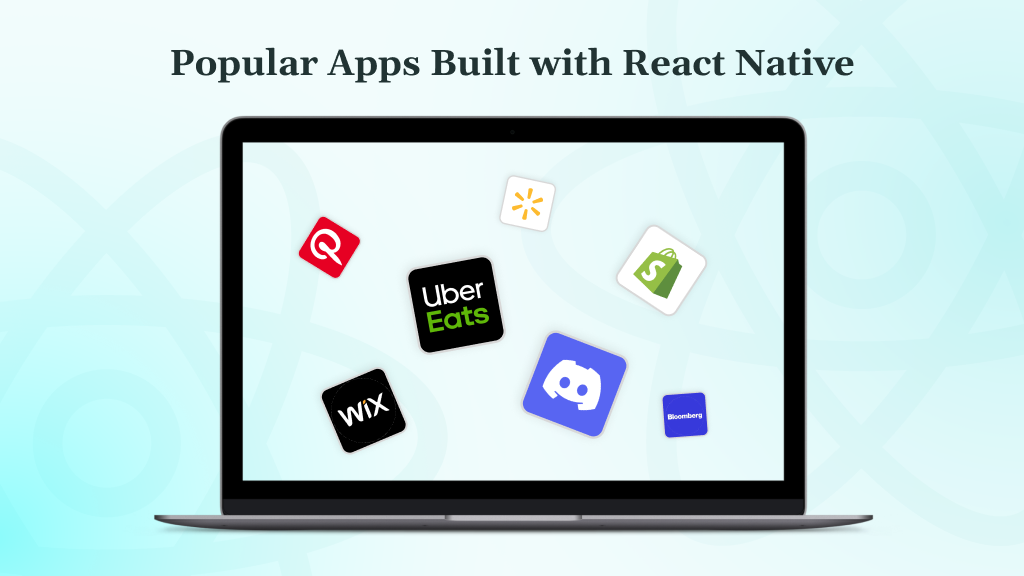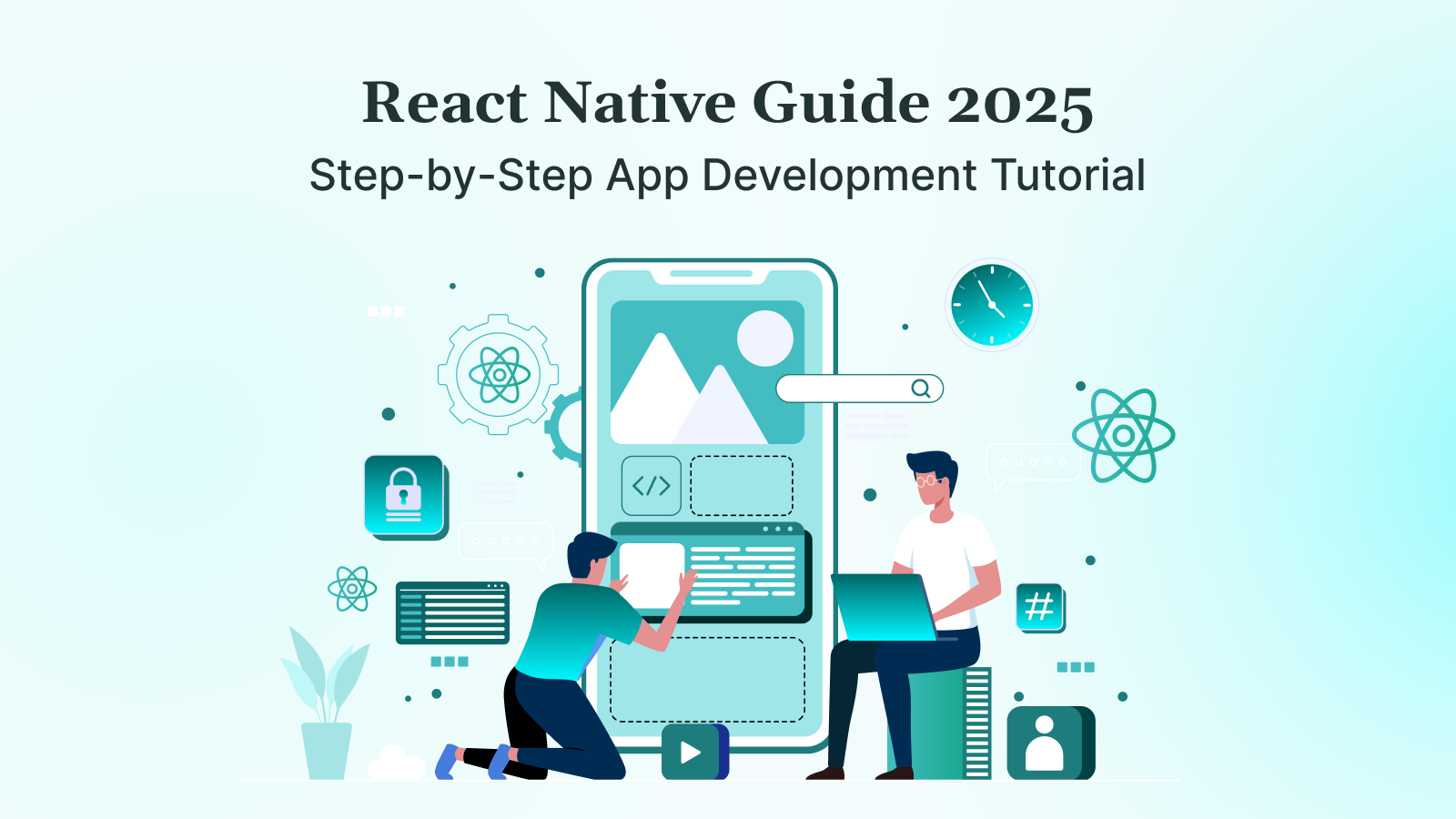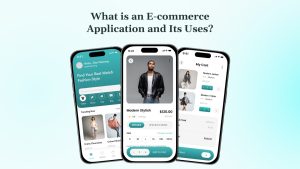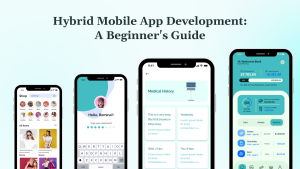React Native is a practical choice for businesses that need high-performance mobile apps built quickly, without the need to maintain separate codebases for iOS and Android. It appeals to product owners, tech leads, and startup CTOs who manage lean teams and tight timelines.
It is the go-to technology when speed-to-market and platform consistency are priorities.
This guide walks you through the whole development process: from setting up your environment to deploying a production-ready app. You will gain a clear understanding of how to build efficiently, avoid common pitfalls, and make informed decisions that scale.
If you are building a mobile MVP, React Native enables you to move quickly with a single codebase, ensuring consistent experiences across both iOS and Android platforms. This guide shows you how to build, optimize, and launch with clarity.
Key Takeaways
- React Native lets you build iOS and Android apps with a single codebase, cutting dev time and costs without compromising performance.
- Fast setup, a modular UI, and built-in navigation tools make it ideal for both MVPs and full-scale mobile products.
- Efficient state management and optimized data fetching keep apps responsive and easy to scale.
- Performance tuning using tools like FlatList, Hermes, and native modules is essential for real-world reliability.
- DEVtrust delivers end-to-end support for React Native mobile app development, from architecture and UI to deployment and QA, built for scale.
Advantages of Using React Native for Mobile Development

For SaaS CTOs, enterprise tech leads, and agile product teams, React Native delivers practical efficiency with less code to manage, faster releases, and a consistent user experience across platforms.
If you are aiming to launch quickly, reduce engineering overhead, or maintain consistent UX across platforms, these are the advantages that make React Native a strong contender:
- Single codebase for iOS and Android, reducing development time and effort.
- Lower development and maintenance costs by consolidating teams and workflows.
- Hot reloading and live updates that speed up iteration and testing.
- Access to native modules for performance-critical features.
- Large open-source community offering regular updates and support.
- Broad ecosystem of plugins and integrations, from navigation to analytics.
- Scalability across project sizes, from MVPs to enterprise-grade apps.
Overall, React Native brings strategic value to mobile projects where time, quality, and scale are non-negotiable. To fully leverage its potential, it is essential to start with the right tools, configurations, and environment setup.
How to Get Started with Your First React Native Project
The entire process of React Native development begins long before the first line of UI code is written. You will always start your projects by configuring a stable, efficient environment tailored for cross-platform work. Do not worry if you have not done it ever before, our comprehensive guide will guide you every step of the way:
Step 1: Setting Up Your Development Environment
To start your React Native mobile app development project, you need a properly configured local setup. A reliable environment ensures your code compiles consistently and the app runs without build errors across iOS and Android targets.
Begin by installing the core dependencies:
- Node.js and npm: Node.js powers the JavaScript runtime, and npm handles your package management. Download the latest stable LTS version from nodejs.org.
- React Native CLI: Install it globally via
npm install -g react-native-cli. You will use this to initialize and manage your project.
For Android development:
- Java Development Kit (JDK): React Native requires JDK 11 or newer. Ensure the
JAVA_HOMEenvironment variable is set. - Android Studio: Install with Android SDK, emulator images, and required build tools. Configure an emulator or connect a physical device with USB debugging enabled.
For iOS development (macOS only):
- Xcode: Install from the App Store. This includes the iOS SDK, Simulator, and build tools.
- Ensure Xcode Command Line Tools are installed:
xcode-select --install.
Once system dependencies are in place, initialize your project:
npx react-native init YourAppName
cd YourAppNameUnderstand the project structure before jumping in:
ios/andandroid/contain native platform code.src/is where you will keep your app logic, components, and screens.App.jsis your app’s root component.package.jsonmanages dependencies and scripts.node_modules/holds installed packages, do not edit this directly.
Next, verify that your development server and simulators are working:
npx react-native start
npx react-native run-android
npx react-native run-iosThe Metro bundler should launch, and your app should render in an emulator or connected device. Enable live reloading or Fast Refresh to see updates instantly as you develop.
By setting up a clean, consistent environment from the beginning, you avoid debugging avoidable build issues later. This step forms the technical backbone for everything that follows in your React Native mobile workflow.
Step 2: Building a Basic User Interface
In React Native mobile app development, the user interface is built entirely with components, modular building blocks that represent screens, buttons, text fields, and layout elements. Getting this layer right ensures your app feels responsive, intuitive, and visually consistent across devices.
Start with functional components using ES6 syntax. They are simpler to write, easier to maintain, and compatible with React Hooks, which you will use for managing state and side effects.
const WelcomeMessage = ({ name }) => {
return <Text>Welcome, {name}!</Text>;
};Use props to pass data between components. This keeps your UI predictable and easy to test. For internal changes (like toggling a modal or storing user input), use useState to manage local component state:
const [isVisible, setIsVisible] = useState(false);Styling is done using the StyleSheet API, which mirrors CSS but is optimized for mobile rendering. Apply consistent typography, spacing, and layout through reusable styles:
const styles = StyleSheet.create({
header: {
fontSize: 24,
fontWeight: 'bold',
marginBottom: 12,
},
});Keep styling modular. Extract common design patterns into a centralized styles or theme file. This helps maintain visual consistency as your app scales.
When targeting both iOS and Android, account for platform-specific variations. You can use the Platform API to adjust fonts, margins, or behavior:
marginTop: Platform.OS === 'ios' ? 20 : 10,For responsiveness, avoid fixed dimensions. Use Flexbox layouts and percentage-based widths so your app looks good on a range of screen sizes. You can also use the library react-native-responsive-screen if your app requires advanced scaling.
By combining functional components, clear state logic, and responsive design principles, you will establish a UI foundation that adapts well and feels consistent. This sets the stage for scalable navigation and data handling.
Step 3: Adding Navigation to Your React Native App
Navigation is a critical part of any mobile application; it determines how users move between screens and how your app manages transitions, stacks, and UI states. In React Native mobile app development, the most widely adopted solution is React Navigation. It is flexible, well-documented, and works seamlessly across platforms.
Start by installing the required packages:
npm install @react-navigation/native
npm install react-native-screens react-native-safe-area-context react-native-gesture-handler react-native-reanimatedThen, install the specific navigator you want to use. For example, for stack-based navigation:
npm install @react-navigation/stackMake sure to run npx pod-install if you are working on iOS.
Set up the navigation container at the root of your app. This is required for any navigation logic to work:
import { NavigationContainer } from '@react-navigation/native';
export default function App() {
return (
<NavigationContainer>
{/* Your navigators go here */}
</NavigationContainer>
);
}Inside this container, define your navigators:
- Stack Navigator: For workflows with back-and-forth navigation (e.g., login > home > details)
- Tab Navigator: For bottom tab navigation across major sections
- Drawer Navigator: For apps that require a side menu
Example of setting up a stack:
import { createStackNavigator } from '@react-navigation/stack';
const Stack = createStackNavigator();
<Stack.Navigator>
<Stack.Screen name="Home" component={HomeScreen} />
<Stack.Screen name="Profile" component={ProfileScreen} />
</Stack.Navigator>Each screen is a component. You can pass parameters between them using navigation.navigate('ScreenName', { data }) and receive them via route.params.
You can also control headers, gestures, and screen-specific options like this:
<Stack.Screen
name="Details"
component={DetailsScreen}
options={{ headerShown: false }}
/>By implementing structured navigation early, you maintain clear and adaptable routing logic. This helps as the app grows in complexity, whether you are adding onboarding flows, nested tabs, or role-based access later.
Step 4: Managing State and Fetching Data
In any mobile application, managing state and handling asynchronous data are core functions. For React Native mobile apps, the right approach strikes a balance between performance, simplicity, and scalability, especially when working with remote APIs, user sessions, or dynamic UI states.
Start with the local component state using React’s useState hook. It is ideal for toggles, input fields, or any logic scoped to a single component:
const [isLoading, setIsLoading] = useState(true);
When state needs to be shared across multiple components or screens, use Context API or introduce a dedicated state manager like Redux:
- Context API is built into React. It is lightweight and great for small to medium apps.
- Redux is better for complex data flows and fine-grained control over state updates. It works well with tools like Redux Toolkit and Redux Persist.
To fetch external data, use fetch or axios. For basic use cases:
useEffect(() => {
fetch('https://api.example.com/data')
.then(res => res.json())
.then(json => setData(json))
.catch(err => console.error(err));
}, []);
For more control (e.g., interceptors, timeouts), axios is preferred:
axios.get('https://api.example.com/user')
.then(response => setUser(response.data))
.catch(error => console.log(error));
If you are making authenticated requests, centralize headers and token management using an API service layer. This keeps your data logic clean and reusable.
Also consider:
- Managing loading and error states explicitly
- Canceling in-flight requests on component unmount using
AbortController - Using libraries like React Query or SWR for advanced data fetching, caching, and syncing
Effective state and data handling prevent unpredictable UI behavior, race conditions, and unnecessary re-renders. This keeps your React Native mobile app responsive and stable under real-world usage.
Step 5: Optimizing Performance
React Native delivers solid baseline performance out of the box, but mobile apps with growing complexity, animations, or extensive data sets demand proactive optimization. Efficient performance ensures smooth user interactions, lower memory usage, and faster load times. This is critical to user retention and app store ratings.
Start by minimizing unnecessary re-renders:
- Use
React.memoto memoize components that do not need to update every render - Replace anonymous functions and inline styles in render methods with stable references
- Use
useCallbackanduseMemoto optimize functions and derived values
If your app includes large lists or repeated elements, prefer FlatList or SectionList over ScrollView. These components are virtualized, meaning they render only the visible items:
<FlatList
data={items}
renderItem={({ item }) => <ItemCard data={item} />}
keyExtractor={item => item.id}
/>
Avoid complex logic in render methods. Extract it into utility functions or hooks so your UI remains fast and focused.
To further boost performance:
- Move static assets like images to local files and preload them
- Use native modules for CPU-intensive operations like video processing or gesture-heavy animations
- Offload animations to the native thread using libraries such as Reanimated 2 or Lottie
For image-heavy or interaction-rich apps, consider enabling Hermes, a JavaScript engine optimized for React Native. It reduces app size, improves startup time, and provides better memory management on Android.
You can profile app performance using:
- Flipper with the React DevTools plugin
- React Native Performance Monitor
- Mac:
Cmd+DorCmd+M - Windows/Linux:
Ctrl+M
- Mac:
Proactive tuning helps your React Native mobile app remain responsive and efficient across a wide range of devices, especially under real-world load conditions.
Step 6: Testing and Debugging
Reliable mobile apps are built with tight feedback loops. In React Native mobile app development, testing and debugging are not optional; they are essential for identifying regressions early, ensuring cross-platform consistency, and delivering a stable experience across devices.
Begin with unit tests for individual components and logic:
- Use Jest, which ships with React Native, for testing functions, UI rendering, and async behavior
- Mock API calls and external modules to isolate logic
- Use React Native Testing Library to simulate user interactions and verify component behavior
Example unit test:
import { render } from '@testing-library/react-native';
import WelcomeMessage from '../WelcomeMessage';
test('renders the correct greeting', () => {
const { getByText } = render(<WelcomeMessage name="Alex" />);
expect(getByText('Welcome, Alex!')).toBeTruthy();
});
For integration testing, focus on key flows such as login, navigation, and data loading. Use screen readers or accessibility roles to make tests resilient to UI changes. Avoid relying on test IDs unless necessary.
In development, debugging tools help trace layout issues, failed API calls, and crashes:
- React Native Debugger combines Redux DevTools and Chrome DevTools in one interface
- Use console.log and React DevTools for inspecting props, state, and re-renders
- Leverage Flipper for advanced debugging, performance monitoring, and plugin support
To inspect layout boundaries and performance:
- Open the in-app developer menu
- macOS:
Cmd+DorCmd+M - Windows/Linux:
Ctrl+M
- macOS:
- Enable options like “Show Perf Monitor” and “Highlight Updates.”
As your app scales, integrate CI/CD pipelines using tools like GitHub Actions, Bitrise, or CircleCI. Automate test runs, build generation, and distribution to staging or QA teams.
Consistent testing and debugging make your codebase more resilient and predictable. It keeps regressions low and builds trust with your users and stakeholders.
Step 7: Deployment and Release
Once your app is stable, tested, and performance-tuned, the final step is preparing it for distribution. Deploying a React Native mobile app involves creating production-ready builds, signing them properly, and submitting them to the appropriate app stores.
For Android:
- Update
android/app/build.gradlewith a version number and name. - Generate a signed release key using Android Studio or the keytool command.
- Add the keystore path and credentials to
gradle.properties. - Build the release APK or AAB (preferred format for the Google Play Store):
cd android
./gradlew assembleRelease # APK
./gradlew bundleRelease # AAB
For iOS:
- Update version and build numbers in Xcode.
- Ensure provisioning profiles and certificates are in place.
- Open the project in Xcode and select “Generic iOS Device” or your target.
- Archive the project via Product > Archive, then export for App Store distribution.
Before submission:
- Test release builds on physical devices.
- Optimize assets and remove unused dependencies.
- Use Proguard (Android) and Bitcode stripping (iOS) to reduce file size.
For over-the-air updates and faster delivery of minor changes, consider integrating CodePush via Microsoft’s App Center.
Post-deployment, monitor crash reports and user metrics using:
- Firebase Crashlytics
- Sentry
- App Store and Play Store dashboards
Deploying a React Native app requires attention to detail, but once configured, the process is repeatable and reliable. A clean release workflow ensures you can ship confidently and maintain a consistent experience across platforms.
Popular Apps Built with React Native

Since Meta actively supports React Native, it is a reliable choice for companies that demand both speed and stability. Here are some popular, consumer-grade applications that React Native powers:
- Uber Eats utilized React Native to streamline its cross-platform delivery experience, enhancing order tracking and enabling real-time UI updates.
- Walmart adopted React Native to unify its mobile shopping app, enhancing feature parity across iOS and Android.
- Discord (iOS) rebuilt its iOS app in React Native for faster iteration and a consistent experience across devices.
- Wix utilizes React Native to power its mobile app, enabling users to manage their websites from anywhere.
- Bloomberg chose React Native to deliver real-time market updates and a fast, data-rich interface on mobile.
- Pinterest tested React Native modules to accelerate feature development across platforms.
- Shopify has integrated React Native into multiple app surfaces to reduce duplication within the mobile team.
These examples demonstrate that React Native is definitely viable and is already trusted by global platforms that manage millions of users. It scales from MVPs to enterprise-grade mobile products.
How DEVtrust Powers Enterprise-Level Tech Solutions
React Native is a practical choice if you are looking to build fast, high-performing mobile apps without juggling two separate codebases. It is built for teams that need to move quickly. With it, you will spend less time duplicating work. You will also reduce costs and deliver a consistent experience more quickly.
If you are exploring React Native for mobile apps or need end-to-end development support, DEVtrust can help you move with speed and confidence. We have developed enterprise-grade solutions using React Native, building scalable mobile and web applications, creating secure backends, and enabling third-party integrations with services such as Stripe, Twilio, AWS, and Firebase.
Our work spans HealthTech, FinTech, EdTech, Logistics, and AI/ML, and we offer custom solutions that drive business outcomes, reduce time-to-market, and scale with your roadmap.
We specialize in building full-stack digital products. Our services encompass:
- Mobile applications
- Robust CMS platforms
- Responsive and beautiful front-end interfaces
- Robust and scalable backend systems
- Intuitive and Slick UI/UX
- AI-powered automation
- Secure Databases
- QA & Testing
Looking to build high-performance, scalable tech without the overhead? Let DEVtrust bring your vision to life. Contact us to get started.
React Native Guide 2025: Step-by-Step App Development Tutorial
Kickstart React Native mobile app development in 2024! Set up your environment, manage data fetching, optimize performance. Start developing now!
Contact Us


